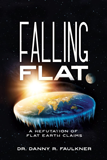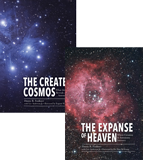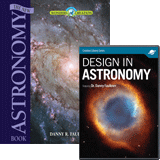The December Solstice and a Possible Christmas Star?
The December solstice this year is at 5:02 a.m. EST tomorrow, Monday, December 21. This will be the official start of winter in the Northern Hemisphere and the beginning of summer in the Southern Hemisphere. That day also will be the shortest day of the year in the Northern Hemisphere and the longest day in the Southern Hemisphere. For locations in the Northern Hemisphere, the noonday sun will appear its absolute lowest in the sky on the December solstice. Conversely, in the Southern Hemisphere the noonday sun will be at its absolute highest in the sky on the December solstice (except in the southern tropics).
The reverse is true on the June solstice (six months from now). On the June solstice, the sun will be at its northernmost point, with the noonday sun highest for Northern Hemisphere locations not in the tropics. In the Southern Hemisphere, the noonday sun will be lowest in the sky. The June solstice marks the official start of summer in the Northern Hemisphere and the beginning of winter in the Southern Hemisphere.
Halfway between the solstices are the March and September equinoxes.
Halfway between the solstices are the March and September equinoxes. On the equinoxes, all regions of the earth except the poles experience twelve hours of the sun being above the horizon and twelve hours of the sun being below the horizon (the word equinox comes from the Latin for “equal night”). The equinoxes are the traditional beginnings of spring and autumn in most cultures.
Many people are surprised to learn that the sun doesn’t always rise due east and set due west. The sun rises due east and sets due west only on the equinoxes. Between the March and September equinoxes, the sun rises north of east and sets north of west. This is true worldwide, except near the poles. Conversely, between the September and March equinoxes, the sun rises south of east and south of west, also worldwide. On the December solstice, the sun rises as far south of east as possible and sets as far south of west as possible.
Celebration of the December Solstice
Many pagan cultures observed the dates of the solstices and equinoxes as celebrations.
Ancient cultures observed the dates of the solstices, as evidenced by ancient monoliths such as Stonehenge and Newgrange. Many pagan cultures observed the dates of the solstices and equinoxes as celebrations. The Celts even observed the cross-quarter days, dates midway between the solstices and equinoxes. The December solstice was a very important celebration of Germanic and Celtic peoples, the early inhabitants of northern Europe. This likely was because of the frightful possibilities that the sun’s southerly trek throughout the autumn presented. What if the sun didn’t reverse this movement? It would become very dark and cold, making life impossible. With no understanding of what caused the sun to travel southward, it probably was quite a relief to see the sun slow and then reverse its southward motion on the December solstice each year. To the pagan mind that worshipped the creation rather than the Creator (Romans 1:25), this called for celebration. Therefore, the December solstice became an important festival for Germanic and Celtic tribes. However, there is not much evidence that this practice expanded much farther south until later, about the time that paganism in the West was on the wane.
The Coincidence of the December Solstice and Christmas
The date of the December solstice usually is the 22nd, but the irregularities of our Gregorian calendar cause the solstices and equinoxes to occur about a day earlier after a leap day (which was nine months ago). The Gregorian calendar derives from the Julian calendar. Proposed by Julius Caesar in 46 BC, the Julian calendar took effect the following year. On the original Julian calendar, the December solstice usually was on the 25th day of the month. By the fourth century, an error in the Julian calendar had shifted the average date of the December solstice three days earlier, to December 22. By the 17th century, the error had accumulated to an additional 10 days (December 12). Therefore, in 1582 Pope Gregory XIII proposed the Gregorian calendar reform to fix the slight error of the Julian calendar that caused it to slip with respect to the seasons. Rather than restoring the calendar to what it was in 46 BC, the Gregorian calendar restored the calendar to what it was in AD 325, the year of the Council of Nicaea. This has kept the average date of the December solstice on the 22nd.
From the few clues found in the accounts of Jesus’ birth in the gospels of Matthew and Luke, most scholars don’t believe he was born on December 25.
The Bible doesn’t specifically identify when Jesus was born. From the few clues found in the accounts of Jesus’ birth in the gospels of Matthew and Luke, most scholars don’t believe he was born on December 25. No one knows why the date of December 25 was chosen to celebrate the birth of Jesus Christ. One popular theory is that this date was chosen because it coincided with a celebration of the December solstice in the first century. However, why this was done and other details of this theory vary, so while this is a popular theory, it is hardly well established. For instance, there is not much evidence that the December solstice was a widely celebrated festival in the Roman Empire in the first century.
Another Christmas Star?
Tomorrow evening (December 21) will be the next conjunction of Jupiter and Saturn.
A story about a Christmas star this year has recently started making the rounds. Jupiter appears as one of the brightest stars in the sky. Only Venus and rarely Mars appear brighter. Saturn appears as a somewhat dimmer but still bright star. About every 20 years Jupiter overtakes Saturn in our sky. When the two are close together, we say that they are in conjunction. I witnessed previous conjunctions of Jupiter and Saturn in 1980 and 2000. Tomorrow evening (December 21) will be the next conjunction of Jupiter and Saturn. This conjunction will be unusually close, only about 1/10 degree apart. While these two objects will be very close in the sky, they will still appear as two, not one, star. Jupiter and Saturn set shortly after the end of twilight, so they will not be easy to see. You will have to look for them low in the southwest shortly after sunset. If you wait until the sky is dark, you will miss them. Furthermore, you will need a good exposure toward the southwest: any obstructions such as trees or buildings likely will block your view. Even thin clouds will make this conjunction difficult to see, so the weather must be nearly perfect too.
Conjunctions of planets have been common theories of the original Christmas star recorded in Matthew 2:1–12. It is likely that the conjunction this year will be tied to some of those other theories. However, this is not a good reason to get overexcited about this conjunction. Besides, this relatively rare conjunction occurs on the date of the solstice, not Christmas, but no one seems to see any significance in that. Nevertheless, if you have the opportunity, avail yourself of the chance to see Jupiter and Saturn closer together in our sky than they have been in more than 800 years.
Recommended Resources

Answers in Genesis is an apologetics ministry, dedicated to helping Christians defend their faith and proclaim the good news of Jesus Christ.
- Customer Service 800.778.3390
- © 2024 Answers in Genesis





